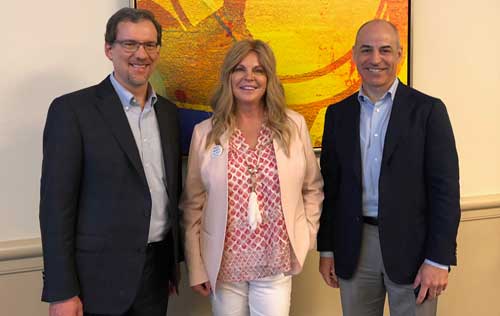Please enable pictures on your device for full story
An important aspect of building customer relationships is managing customer feedback. This includes both short- and long-term objectives: it involves responding to feedback as it happens and collecting and analyzing feedback from many customers to look for recurring problems and opportunities.
Let's look here at what it takes to manage customer feedback as it happens. There are five important steps.
The first step is to identify feedback that requires you to respond as it is occurring. This can happen via in-person settings, feedback through surveys (especially transactional surveys that immediately follow service), posts on social sites such as Twitter or Facebook, ratings and feedback through sources such as Amazon, Yelp and Google, feedback through email, text, phone or other channels, and, potentially, many others.
I'd suggest brainstorming this with your team. Where are conversations taking place, and where do you need to respond quickly?
Second, you'll need to identify and train employees who will be involved. When service is delivered in person, it will obviously be those employees who are best positioned to respond. But what about feedback through surveys, posts on social sites and other sources? This might require a group you set up, or it could involve leveraging your customer service team (for example, your contact center).
In a larger organization, this effort frequently begins in marketing, but I've seen time and again that it can quickly outgrow what marketing can handle from a resource perspective, so a collaborative effort with customer service often makes sense. This person or team will need training in how to respond and how to represent your brand consistently.
The third step is to establish supporting technology. You'll need to set up tools that pull in feedback from all of the various sources, deliver it to the person or team who will respond, and enable you to document the feedback as part of your strategic approach.
 |
 |
|
Brad with Frankie Littleford and Joseph Ansanelli |
JetBlue (see welcome letter) is going all in, and has established a technology arm to invest and build. The partnership with Gladly is one aspect of this effort.
But this doesn't have to require a large investment. Just as an example, there are low-cost tools that monitor social sites and provide you with the means to engage in those conversations. You'll need to determine what's right for your organization.
Find out what technologies you already have, and the capabilities you will need. My encouragement is to focus on the doable—get started right where you are with what you have.
A fourth step is to forecast and plan the workload. Responding to feedback in a timely manner requires that you have the right resources in place at the right time. So you'll need to begin forecasting the workload and making sure you've got the right people available. And you'll need to monitor and manage the work in real time so that issues don't fester.
Finally, you'll need to adjust and improve—in other words, assess how things are going and make adjustments as you go along. My encouragement is to see responding to customer feedback as a way of doing business.
The Walt Disney Company provides a longstanding example. When Disneyland was first built in the 1950s, Walt Disney expressed the service vision as "We create happiness." The strategy his team put in place saw the entire theme park as a stage, and employees as "cast members." This inherently focused every employee on customers.
It's incredibly powerful when an entire organization is in tune with customers and working with each other to respond to their needs.
Recent Issues




